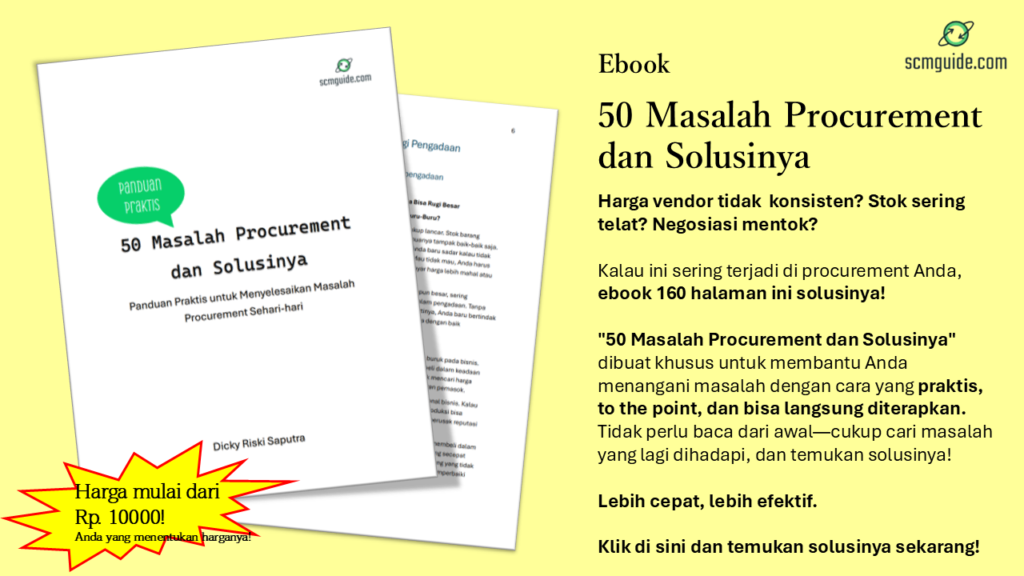In business, a big challenge is finding the right balance between how much a company can produce and how much customers want. This is called production capacity, which is the most a company can make in a certain time. It’s super important because it affects whether a company can keep up with what customers need and keep growing.
But what happens when lots of customers suddenly want more than the company can make? That’s when companies need to think about expanding their production capacity. But deciding when to do this isn’t easy and needs a lot of careful thinking and planning.
Before we go further into this topic, don’t forget to follow my LinkedIn account. You’ll get more helpful insights on supply chain management there.
Table of Contents
Recognizing the Threshold
It’s super important for businesses to know that they can only make so much stuff. Things like resources, technology, people, and infrastructure set the limit on how much a company can produce. When the amount customers want is more than what a company can make, it causes problems. This leads to missed chances and unhappy customers, which can hurt the company’s reputation and how well it does in the market.
So, it’s really important for businesses to understand and deal with the limits of how much they can produce to keep growing and keep customers happy.
Signs of Strain
Knowing when a company can’t make enough stuff anymore needs a good understanding of what’s happening in the market, how customers act, and how well things are going inside the company. Signs that things are getting tough can show up in different ways.
Backlogs and Delays
When orders take longer to complete and there’s a pile-up of work waiting to be done, it’s a clear sign that the company’s production capacity isn’t enough to handle the demand. These delays not only bother customers but also strain relationships and make trust go down.

Also, when orders take too long, customers might look for other places to buy from that can get them what they need faster.
The pile-up of work makes things even worse because it can lead to more problems and costs for the company.
So, it’s really important for businesses to notice these signs and fix the problem to stay ahead and keep customers happy.
Overtime and Overwork
When employees are working a lot of overtime and feeling overloaded with work, it’s a sign that the company’s resources are being pushed to their limits.
While some overtime is okay when things get busy, too much can make employees feel exhausted, less productive, and unhappy.
It can also cost the company more money.
Tired employees are more likely to make mistakes, which could mean problems with the quality of work and upset customers.
So, it’s really important for businesses to notice when employees are working too much and find ways to help them out.
To deal with too much overtime and overwork, businesses should manage their workforce better and use their resources smarter. This might mean hiring more people, organizing work better, or helping employees learn new skills to work more efficiently.
Making sure employees have a good balance between work and their personal lives is also really important. Using technology to do things faster and easier can also help. By noticing when employees are overworked and doing something about it, businesses can work better, keep employees happy, and be ready for when things get busy.
Quality Issues
When production is rushed to meet high demand without thinking about quality, it often leads to problems like lower product quality and more defects. Rushing can mean skipping important checks or using lower-quality materials just to finish on time. This can make the final products have flaws or inconsistencies, which makes them less reliable.
Lower quality not only hurts the company’s reputation but also makes customers lose trust and stop buying, which hurts sales and profits.
To avoid rushing production and the problems it causes, businesses should focus on making sure their products are high quality. This means doing things like regular checks, testing, and following standards to catch and fix issues early.
Also, it’s important to train and empower employees to care more about quality than finishing quickly.
By putting quality first, businesses can make sure their products meet customer expectations, keep their good reputation, and stay successful for a long time.
You might also like:
- 10 Strategies to Overcome Data Processing Challenges for Supply Chain Teams Lacking Expertise
- 10 Ways Supply Chain Management Can Contribute to Business Profits
Lost Sales Opportunities
When a company can’t handle all the orders because it doesn’t have enough capacity, it’s not just a problem for getting things done. It also hurts relationships with customers.
When orders are late or customers can’t get what they need, they might get frustrated and go to other companies instead. This doesn’t just affect sales right away, but it also makes it harder to keep customers happy in the long run.
Bad reviews and people talking about their bad experiences online can make things even worse, hurting the company’s reputation and making it harder to get new customers.
To make things better, companies need to be honest with customers about what’s going on and try to fix things as soon as possible.
Being open about delays and offering other options shows that the company cares about keeping customers happy.
Also, finding ways to increase capacity or changing how things are done can help prevent these problems from happening again.
By focusing on keeping customers happy and fixing problems quickly, companies can make sure that missing orders doesn’t hurt sales or the company’s reputation too much.
Strategic Expansion
When a company needs to make more stuff, they have to be careful about how they do it. Here are some things they should think about.
Demand Forecasting
Using historical data, market research, and customer feedback is really important for figuring out how much stuff a company might need to make in the future.
Historical data shows what sales were like before and if there were any patterns or changes over time.

Market research helps businesses understand what’s going on in the industry and what other companies are doing.
Customer feedback gives real-time info about what people want and how their needs are changing.
By looking at all this info together, businesses can make smarter guesses about how much they’ll need to produce in the future.
Understanding how much stuff people will want is key for deciding how much a company should make. By looking at historical data, market research, and customer feedback, businesses can see if there are any trends or changes in what people want.
With this info, they can decide if they need to make more stuff, invest in new technology, or change how they do things to meet demand.
By making sure they produce the right amount, businesses can avoid wasting resources or not having enough to keep up with what people want.
Investment Analysis
Doing a good cost-benefit analysis is really important before deciding to make more stuff. This means looking at all the costs of making more stuff, like buying new equipment or paying more for things like labor and utilities.
But it’s not just about the costs – businesses also need to think about the benefits, like selling more stuff or making customers happier.
By carefully comparing the costs and benefits, businesses can figure out if making more stuff will make sense financially in the long run.
When thinking about costs and benefits, businesses should also consider other things that might not be as easy to measure.
For example, making more stuff might help the company compete better or make customers like them more. It could also make things more efficient or save money in the long run.
By looking at everything together, businesses can make smart decisions about whether making more stuff is the right move for them.
Flexibility and Scalability
Flexibility and scalable technologies are super important for businesses to manage how much stuff they make when demand changes.
Flexible production processes let companies change how much they make really quickly when demand goes up or down. This helps them avoid wasting resources or not making enough to keep up.

By using flexible methods like modular production lines and training employees to do different tasks, companies can move resources around easily to match what the market needs.
Investing in scalable technologies, like robots and automation, also helps companies adjust how much they make without spending a lot of money or messing up their operations.
These technologies make things more efficient and productive while letting companies respond fast to what customers want.
Using scalable technologies not only makes things flexible but also helps companies be ready for whatever comes their way in the future.
By investing in technologies that can change production levels easily, companies don’t have to worry about spending too much money on things that might not be needed later.
Scalable technologies help companies use resources better, make less waste, and run things more smoothly, saving money and making more profit.
Plus, being able to change how much stuff they make based on what customers want helps companies grow and stay ahead in the fast-changing market.
Overall, being flexible and using scalable technologies is key for companies to manage how much stuff they make and keep growing in the long run.
You might also like:
- 10 Ways Supply Chain Management Can Contribute to Business Profits
- The Top 10 Reasons Why Production Machines Often Encounter Problems Right Up to the Stop Line
Efficiency Improvements
Before deciding to make more space, businesses should first try to make things work better with what they already have. This means finding and fixing things that slow down work or waste resources.
Simple changes like doing maintenance to avoid breakdowns, cutting out extra steps in processes, or using machines to do repetitive tasks can make a big difference without spending a lot of money.
By using what they already have more effectively, businesses can make more stuff, spend less money, and avoid rushing into making more space right away.

Making things work better where they are now not only helps right away but also sets up businesses for success in the long run.
By looking at how things are done and finding ways to do them better, businesses can keep getting better over time.
Using good practices, encouraging employees to find ways to do things better, and making sure employees have the skills they need all help make things run smoother and make more profit.
By focusing on making things work better where they are now, businesses can get more out of what they have, be better than the competition, and be ready for whatever the future holds.
Risk Mitigation
Before deciding to make more space, businesses should think about the risks involved and have plans to deal with them.
One big risk is that they might make too much stuff if the demand goes down, which can lead to having too much inventory and losing money.
They also need to think about whether there are already too many companies making the same stuff, which can make it hard to sell and lower prices.
Plus, things like the economy going down or what customers want changing unexpectedly can make things even harder.
To handle these risks, businesses need to have plans in place to change things quickly if they need to.
This could mean slowly making more space as demand goes up, offering different things to sell, or finding new ways to sell what they have.
By thinking ahead and having plans to deal with risks, businesses can be ready for whatever comes their way and keep growing.
Conclusion
In business, dealing with how much stuff a company can make needs smart thinking and planning.
It’s important to notice when things are getting hard, figure out how much stuff customers will want, and decide if making more space is the right move.
By looking at everything together and being ready to change, businesses can keep up with the competition and make customers happy, even in a changing market.
I hope you find it helpful!
Please share this article with your colleagues so they can also benefit. For more insights on supply chain management, follow my LinkedIn account. You’re free to use all articles on this blog for any purpose, even for commercial use, without needing to give credit.

 by
by 


